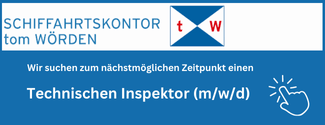Due to tightening regulations on emissions in the shipping industry, the installation of exhaust
gas scrubber systems becomes increasingly widespread. A durable coating to protect the inside of these scrubbers is needed
With the IMO’s new global sulphur regulation coming into force in 2020 and in the face of low markets, many[ds_preview] shipowners opt for exhaust gas cleaning systems, scrubbers, for their newbuildings or retrofits. To many the scrubber still seems to be the less expensive and less complex option to achieve compliance with the sulphur regulation rather than technologies such as LNG. To make the most of the investment in the scrubber, its coating should be suited to withstand the aggressive exhaust gases and scrubber water – protecting the scrubber and the paint itself.
Recently, the outlets of the exhaust gas scrubbers in three newbuild container vessels were coated with Subsea Industries’ Ecospeed coating at the shipyard in Zhoushan, China.
The exhaust gas cleaning systems remove nitrogen oxides, sulfur oxides, hydrocarbons, heavy metals, carbon monoxide, soot and ashes. A lasting, chemically resistant coating was needed that could withstand the hazardous pollutants and high temperatures of the exhausts and protect the areas surrounding the outlets. According to Subsea Industries, some shipowners have experienced damaged pipework at the outlet end of the scrubber system due to the highly corrosive washwaters. Production Executive Manuel Hof says: »There have been some instances where unprotected pipework has completely corroded after just three years of scrubber operation. Shipowners and shipbuilders looking to install exhaust gas scrubbers must not overlook protecting internal pipework with an effective coating.«
»The reason why users of exhaust gas cleaning systems are selecting Ecospeed is because of its chemical resistance properties. For these projects, Ecospeed was used for the scrubber outlet areas. When a scrubber is used, there is a risk that the wastewater coming out the scrubber exhaust contains chemicals or chemical particles that can attack and corrode steel around the area of the outlet. There is a risk that the coating on these specific areas will be affected,« Hof explains.
The Ecospeed coating is applied by airless spray. It is a vinyl ester with glass »platelets«, relatively large flakes of glass. A vinyl-ester coating forms a very homogenous, tight film over the coated surface. The film provided by the vinyl-ester coating is different from many other commonly used coating materials, Subsea Industries says. The resins used to manufacture the coating are completely polymerized and go through no oxidation, chemical reaction, or other change in forming the film or on ageing.
A vinyl-ester coating is basically inert to almost all inorganic substances such as acids, alkalis, and salts, as well as to water, oil, grease, alcohols, and similar materials. They are generally tough, and extensible, with excellent resistance to water and vapors and to external weathering. Glass is completely impermeable to liquids and is entirely resistant to chemicals. That is why glass platelets are being used as impermeable layers in coatings. »By combining relatively large flakes of glass in a vinylester coating in a way that the platelets overlap each other, adhering firmly to the resin in a fairly thick coating, one can achieve an impermeable barrier which can protect steel from all the corrosive elements,« Hof says.
»All Subsea Industries coating applications come with a ten year performance guarantee but in reality the coatings are expected to last the vessels’ life time – 25 years or more,« Hof adds. While he has no detail on the exact chemical composition of the scrubber wastewater, SOx, CO2 and NOx are sure to feature in the mix, what is certain is that the mixture is highly acidic and corrosive. Any coating must be resistant to low pH values. According to Subsea Industries the coating will last for the vessel’s lifetime – no repaints will be needed during future dockings of the ship, saving time and money.
Ecospeed has been given a B1 classification by DNV GL after testing the coating’s suitability as a ballast tank coating. B1 is the superior grade in a six grade classification system.
The coating Ecospeed is TBT-free, copper-free and biocide-free. Independent research has proven that the coating is 100% non-toxic and there is no negative effect on the water quality or the marine environment at any point of its application or use, the manufacturer emphasizes.
















